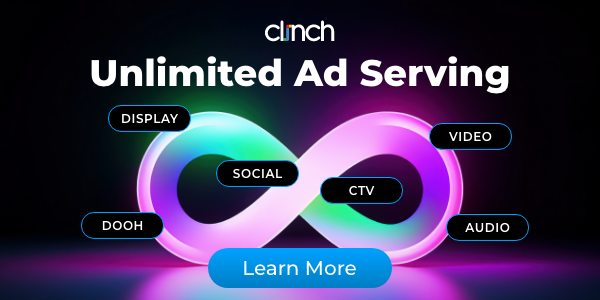As the advertising industry races forward, core technology providers – particularly ad servers, dynamic creative platforms and attribution or measurement companies – play an increasingly critical role in powering the infrastructure that enables targeted, data-driven and performance-optimized campaigns at scale. But one outdated pricing model is becoming an obstacle to innovation, efficiency and effectiveness: CPM-based pricing.
These essential technologies, while crucial to campaign execution, are not media-buying platforms. Yet they often charge like they are, using CPMs and impression-count models that penalize efficiency and make experimentation expensive. The longstanding reliance on CPM (cost per thousand impressions), once foundational to programmatic advertising, has become a misaligned relic in today’s complex, outcome-driven environment, where speed, scale and experimentation should be encouraged, not taxed.
It’s time to retire this misaligned model and move toward a new standard: outcome-driven partnerships built on unlimited usage, predictable pricing and mutual value creation rooted in clients achieving their goals.
Why CPM-based tech pricing is misaligned
Most brands and agencies already optimize their media buys for reach, efficiency and outcomes. But under the current pricing model, the more efficient they are, the more they pay their non-media-buying tech vendors.
If a media team improves performance and manages to serve more impressions for the same budget, it might appear as if they are saving money. But in the grand scheme of things, they’re triggering higher bills from ad servers, creative platforms and measurement tools, which are typically priced based on impression volume.
This is completely backwards. It discourages smart media buying, limits experimentation and creates unnecessary friction in campaign planning, with unpredictable bills that tend to crop up out of nowhere at the end of the month.
The solution is simple. If a tech partner doesn’t buy media, it shouldn’t charge based on media volume. Offering “unlimited” impressions as part of a commercial model is a signal of true alignment that empowers media teams to:
- Expand and experiment freely across formats, audiences and channels.
- Extend campaign reach by maximizing their media dollars without incurring surprise tech fees.
- Accelerate testing and optimization, knowing they won’t be penalized for scale or success.
- Build better communication throughout the consumer journey across multiple channels.
Decoupling usage from cost enables advertisers to adopt better strategies, while giving tech partners a new framework to demonstrate value. Instead of pricing by impressions, partners should focus on delivering measurable outcomes, from speed-to-launch and creative versioning to achieving KPIs and workflow efficiency.
Unlocking unlimited opportunities
For advertisers, unlimited usage removes the invisible tax on creativity, efficiency and growth. It lowers the barrier to entry for emerging brands, which can now use enterprise-grade tools without fear of overages. It enables media teams to run more experiments, explore more channels and adapt faster because innovation is no longer penalized by volume-based pricing.
It also brings budget predictability. Knowing that platform costs won’t fluctuate wildly based on campaign scale lets teams plan confidently and invest more in performance.
This shift isn’t just good for advertisers; it’s also a significant growth opportunity for tech providers. Flat-rate or outcome-aligned pricing paves the way for deeper strategic partnerships built on collaboration rather than transactions. It encourages broader platform adoption as usage expands across campaigns, teams and regions. It also opens access to emerging brands that previously couldn’t afford to scale with CPM-based models. Most importantly, it fosters stickier client relationships rooted in shared goals and measurable results.
Tech partners that embrace this model can shift their commercial strategy to delivering tangible business value without limitations, gaining both differentiation and long-term growth.
Efficiency, in the context of driving outcomes, is becoming an important goal for brands and agencies. It’s time for pricing models to reflect that reality. When tech partners align their pricing with advertiser success, they enable faster execution, smarter decisions and better outcomes for everyone.
For more articles featuring Oz Etzioni, click here.














